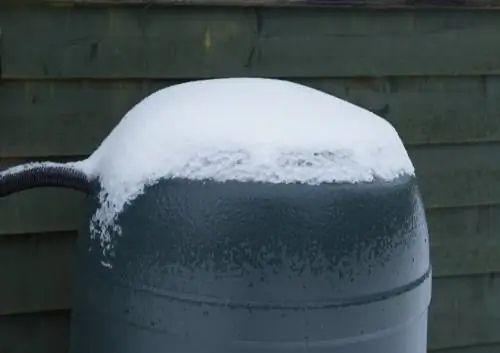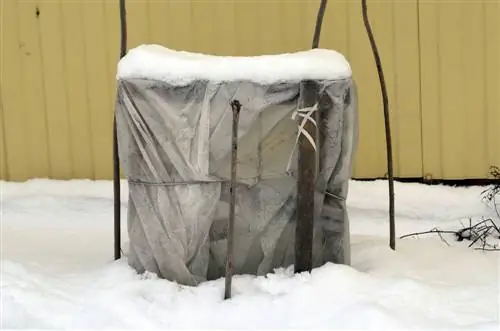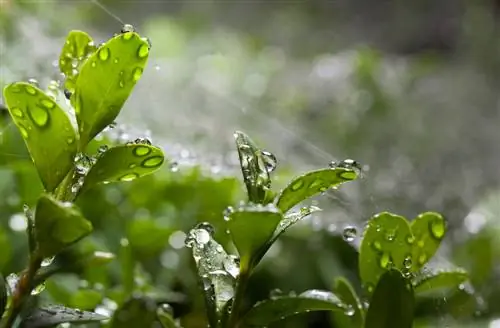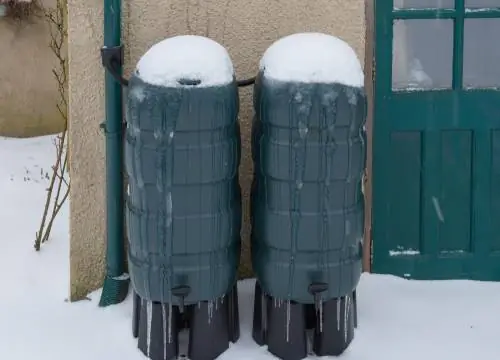- Author admin [email protected].
- Public 2024-01-05 20:48.
- Last modified 2025-01-23 11:22.
Cold temperatures in winter cause the accumulated water in your rain barrel to freeze. Because compact ice has a larger volume than liquid water, its contents expand. As a result, conventional rain barrels burst open and are unusable the following year. You can find out how to prevent this phenomenon with simple measures in this guide.

How do I protect my rain barrel from frost damage in winter?
To protect a rain barrel from frost damage in winter, you should empty it at least two-thirds before the onset of winter, regurgitate any remaining frozen water regularly and prevent new water from running into it. Additional protective measures include storing in warm places and covering with foil.
When is emptying necessary?
Most rain barrels are made of plastic, a material that is prone to tearing or bursting. This happens when the water in the rain barrel freezes. It expands and bursts the outer shell. You will be on the safe side if you empty your rain barrel before the onset of winter. Either skim off the water or let it flow out through the outlet tap.
Some rain barrels are also labeled as frost-proof by the manufacturer. To be really sure that your rain barrel does not suffer any frost damage, you should pour out at least two thirds of the water in this case. Over the course of the winter, you will also have to regularly burp up the upper layer of frozen residual water. Make sure that no new water drips or runs into the bin.
Emptying procedure
To empty, simply turn on the drain tap and let three quarters of the water drain out. Pour out the rest by tilting the barrel. If your rain barrel does not have an integrated drain, you will need a hose device.
Tip
Use the emptying immediately to remove dirt such as pollen or algae that has collected over the year.
Further measures
Are you unsure despite the recommended measures? Then you can take further protective measures:
- Store the rain barrel in a warm place, for example in the garage.
- Cover the rain barrel with foil.






